Exploring Samothrace Chora and the Temple of the Great Gods Part 2
Continuing my explorations of Samothrace Chora, I make my way through the paved alleyways towards the centre of the village. One place that I wanted to see was the Antoniou Family Traditional Bakery. Well, I found it easily enough but unfortunately for me again it is closed. Not to worry though, just seeing it from the outside is good enough for me today having already had my bougatsa for breakfast.
The bakery dates back to 1853, initially a family home with an oven that served the small community. As demand grew in the early 1920’s due to the population exchange and an influx of Greeks from Asia Minor, the bakery was expanded. The bakery is now owned and managed by the fourth generation of the same family.
Having exhausted almost every little nook and cranny of Chora, it is time to go in search of some refreshments. I have a little while to wait before the bus arrives to take me back to Kamariotissa and my feet are weary.
Not far from the bakery is a little cafe bar called Meltemi which has lots of character and even more tempting – it has a roof garden!
The bar owner tells me to sit down and he will bring my drink upstairs for me. The view over the village from here is spectacular so I take a wobbly 360° video.
Sitting by the edge of the terrace taking it all in I become totally engrossed in the scenery around me. Soon after, I hear the clanking of footsteps climbing the metal steps. A young couple take a seat at a nearby table and we immediately strike up a conversation. I noticed that he had a Northern accent though definitely not local to me. I asked him where he was from and he told me Wakefield in Yorkshire. I was curious to find out what brought him to Samothrace. I had already hazarded a guess that he was here volunteering on one of the many environmental projects on the island. It transpires that he’d never been abroad before but just before Covid struck he decided to come to Samothrace for a holiday. Fortunately or unfortunately (I’d say the former) he became stuck on the island as the travel restrictions were enforced. He was here for over a year where he learnt to speak a little Greek and now the island is like a second home to him. This is just fantastic!
Further into the conversation, I ask about the bus service and getting to the Sanctuary of the Great Gods from Paleopolis bus stop. The man tells me that I could easily walk from Chora as the road from Kamariotissa carries on in a circle back down to Paleopolis on the coastal road. It’s all downhill so it should be an easy walk.
That’s a plan then. I bid my farewells and head down to the entrance of Chora and past a line of fire engines lined up ready for action. I imagine that when the wildfires raged towards Alexandroupolis just a month or so earlier they would have been on high alert.
I commence the walk. It is impossible to gauge how far it is to the coast by looking from the top of the road. The same crags that block the view of Chora from the coast are the same ones that block the view of the coast in the opposite direction. With the Kastro at my back and the various peaks projecting from the mountains on either side, I feel small. Completely insignificant.
From everything that I know about Samothrace including its hot springs, it is clear that this is an island with volcanic origins. The peaks that formed thousands of years ago vary in size and geology. Along the roadside geometrical patterns have been formed in the rock strata. Some of the peaks are completely barren. Others are covered in pine and olive trees and scrub. Apart from the fields of cereal that grow in the lowlands close to Kamariotissa, the main self-produced food stock is sheep and goats. Many of the tavernas on Samothrace pride themselves at serving the best goat dishes on the island.
The goats appear to have free reign and apart from the odd passing car are the only other forms of life I pass along the road. A cluster of brightly coloured beehives nestled between a copse of pine trees reminds me to ask about the local honey when I return to Kamariotissa. Concrete channels have been built as part of a flood defence system that would divert rain from the mountains down through gullies on the hillside.
About halfway through the walk, the view begins to open out and I catch my first sight of the coast. It still seems a long way off but these things can be deceptive. Behind me, the peak of Mount Saos has its usual halo of cloud that is now beginning to drift down between the crevices. The mountain almost seems to take on a life of its own. It is understandable how ancient civilizations used to conduct rituals on the mountain’s peak upon the appearance of a full moon.
Thoughts of my old bones are put to the back of my head as I let gravity and the gentle breeze push me along. With the warm autumn sun on my face and the almost complete solitude, the walk becomes as enjoyable as the envisaged destination.
I eventually see signs of habitation in the form of several smallholdings clustered together to the right of the road. I’m not far from the main coastal road but Google Maps tells me that the Sanctuary of the Great Gods is somewhere in the midst of this little hamlet. There is another clutch of beehives protected by an alien-like scarecrow. I’m not sure who or what it’s trying to scare. I weave my way past several tumble-down buildings that appear to defy the law of gravity followed by a rubble path which diverges into different directions. Sheep and chickens scatter as I turn a corner. I get the sense that I’m encroaching on someone’s private property but Google Maps is the only source I have to guide me to my destination. Trust the technology! 😍
After a few wrong turns I spot a building in a clearing shaded by Cyprus trees. It’s modern in design with a small car park which can only mean one thing. Google Maps tells me “You have arrived!”
A sign on the museum door says that the museum is closed due to construction work. There is no indication as to whether the site itself is open and there isn’t another soul in sight. I will go and look anyway.
Next to the museum is a beautiful replica statue of Nike, Goddess of Victory, one of the most iconic pieces of art to be discovered, not only on this little patch of Greece but in my humble opinion, the world. The original statue now housed in the Paris Louvre, is made of Parian marble – the most sought-after marble by sculptors. It is part of a larger structure depicting Nike alighting the prow of a quadrireme, a warship favoured by the Rhodian navy. One theory of the monument’s origins is that it was dedicated by the inhabitants of the island of Rhodes following a victorious naval battle.
It is known that from around the 7th century BC, mysterious cults practised their religion within the Sanctuary of the Great Gods. It attracted worshippers from all over the Greek and Roman Empire though to be accepted into the cult, certain trials would have to be achieved. Worshippers believed that by summoning up the Great Gods, they would be bestowed protection against dangers at sea. Although the Mysteries were kept – well, very mysterious, little is known about the cult and their activities. However, artefacts found within the sanctuary have given a good indication of what took part during some of the rituals.
With that in mind, the theory of the dedication of Nike by Rhodes to show their gratitude to the Great Gods seems plausible. She is dated around 190BC but the name of the sculptor is still unknown.
The original statue was discovered buried in the Sanctuary of the Great Gods in 1863 by French Diplomat Charles Champoiseau. 110 pieces of the monument were excavated but the head and arms weren’t found. Charles Champoiseau returned to Samothrace in 1879 to look for the missing pieces. Although he was unable to find the missing head and arms, he did discover the quadrireme, the plinth on which Nike stood.
Back in 2012 the Vice Governor of Evros Dimitris Petrovic and Regional Councillor of Evros George Pavlidis decided that the replica statue of Nike outside the Samothrace Museum was of poor quality. They jointly put in a request to the Louvre to take a 3D scan of the original so that a more accurate representation could be made. Permission was granted and two copies of the original were made of Thracian marble in the city of Drama, close to Kavala. Their dimensions are exactly the same as the original and each weighs 6.5 tons. One of the statues can now be found in Alexandroupolis and the other is here in front of me outside the Archaeological Museum of Samothrace.
The folds of her chiton give a real sense of drama and movement and you get the sense of how the finely woven fabric clings to her stomach as the wind blows towards her. The tips of her toes are delicately poised, capturing the seconds before she touches down on the prow of the ship. She is utterly exquisite – even for a replica!
Now to make my way to the Sanctuary itself in the hope that it is open. A cobbled path takes me down to a clearing amongst the trees and across a small bridge. The path begins to climb again and brings me to a set of green metal gates that are open. Just beyond is a small wooden hut manned by a lady where I purchase an entry ticket for 4€. She gives me a map and guide of the Sanctuary and tells me not to cross the bridge across the stream as it has collapsed.
I pass lengths of broken marble columns lined up along the path. To my right there a set of stone steps that go up to another level but for now, I stay on the lower path. Through a gap in the trees I catch my first sight of the columns of the Hieron. Something catches my eye immediately. Standing in front of the Hieron I can see a man with his arms raised and face pointing up towards the tips of the columns. It was fascinating to watch him summoning up the deities to offer him protection – maybe from prying eyes!
I follow the path around to the other side of the Hieron and then up towards the right which brings me the remains of a necropolis. The information board tells me that it is the oldest and most congested necropolis in Paleopolis and is associated with ceremonial rituals such as funerary pyres and burials.
A little further along is the Theatral Circle located on the Eastern Hill, the oldest part of the site constructed in the late 5th century or early 4th century BC. It’s located at the entrance to the Sacred Way and was a ritual gathering space for the initiates. Although only three tiers remain, curved blocks found nearby suggest it had several more tiers that could accommodate up to 240 (standing) audience members. There are several theories about how the Theatral Circle was used. One idea is that it was part of a purification ceremony of the initiates before they were allowed to enter the Sanctuary. Other thoughts are that it was a place for entertainment such as dance and song and possibly where judgements and rituals took place.
To the corner of the Theatral Circle is the remains of the Dedication of Philip III and Alexander IV. Although not much remains of it now, inscriptions have been found on large blocks that indicate that the building was dedicated by successors of Alexander the Great. It was an impressive 9-metre-high Doric building built from Pentelic marble. This would be the first sight to greet the pilgrims as they crossed the Eastern torrent flowing from the mountain.
Still skirting around the perimeter up above the Hieron, I arrive at the Rotunda of Arsinoe II. This was a large structure built between 288 and 270BC from Thracian marble and is the largest enclosed round building in Greece. It measured 20 metres in diameter. The first two-thirds of the building from the foundations upwards had a smooth marble surface and an ornate entrance. Above this was a circle of tall Doric columns and another layer of Corinthian columns in the interior. Between the two layers of columns were sacrificial images. Finally the building is topped with a cone-shaped roof made from terracotta tiles of which the remains can be seen.
The rotunda was dedicated by Arsinoe II of Egypt to either her first husband Kind Lysimachos of Thrace or her third husband Ptolemy II. The stone with the name of the dedicated has not been found. The rotunda was thought to have been a place to greet dignitaries attending the rituals taking place in the Sanctuary. It is also thought to have been a place of sacrifice.
Just beyond the Rotunda are the foundation stones of the Anaktoron which may also have been used as part of the ritual process.
Now to the Hieron. Although the most prominent building in the Sanctuary today, visitors crossing the torrent wouldn’t see the Hieron until they’d turned the corner at the Hall of Choral Dancers. What a sight this would have been. Measuring 40 metres in length the Hieron was constructed from Thracian Marble and formed by a collonade of Doric columns on each side. The apex roofline was decorated with ornate features including images of Nike, Goddess of Victory. Again, the Hieron is believed to have been used for one of the most important stages of the initiation ceremony known as the Epopteia meaning ‘the seeing’ and the state of Epopteia was achieved after many days of fasting.
There is still a large part of the Sanctuary that I haven’t yet explored but my feet are weary and the gates will soon be closed. There are worse places to get locked in but as I’m now the only person here I’m sure the lady at the kiosk has been keeping a tally of who remains on the site.
Without a shadow of a doubt, the Sanctuary of the Great Gods is a special place. You can feel ‘it’ as soon as you enter the space around the Hieron. Maybe it’s the church effect? Although an Athiest, I never fail to be awe-struck by the beauty of a church or the magnificence of a cathedral which let’s face it, is just a man-made structure designed to make us feel humble. Before I go I do something a bit weird. My eldest granddaughter is currently in Australia to play in several important tennis tournaments. I stand in front of the Hieron and quietly attempt to invoke the power of the Gods but more specifically, Nike the Goddess of Victory. No arm-waving but just a quiet contemplation of a successful tournament for my granddaughter.
I must come back before I leave the island.
After exiting the Sanctuary and making my way on the coastal road, I don’t have the energy to walk another 5km back to Kamariotissa. Thank heavens I took that number for the taxi driver!


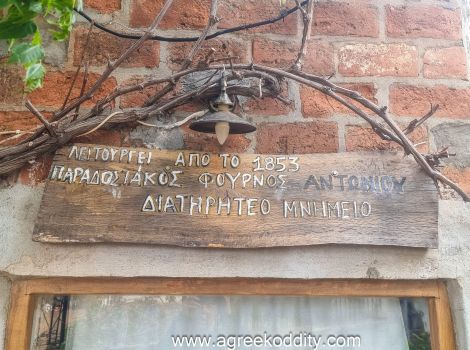


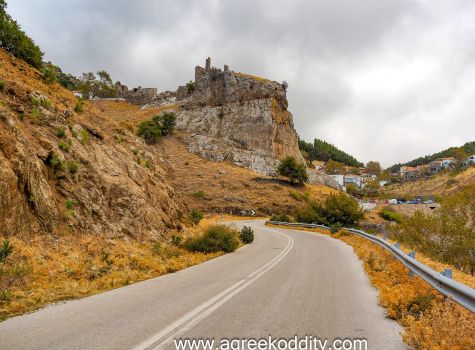
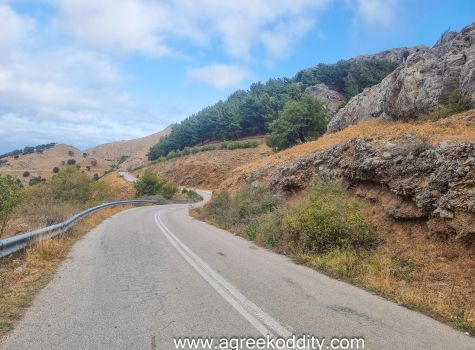
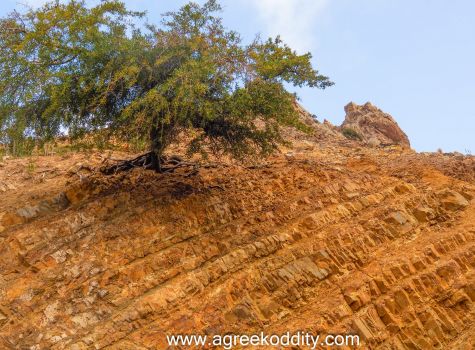
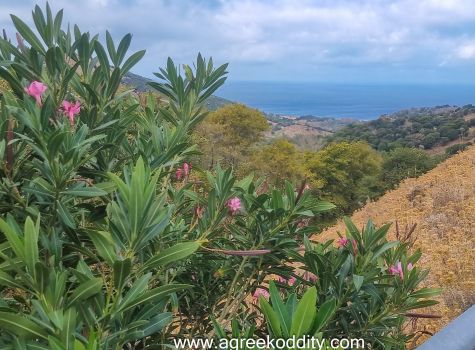
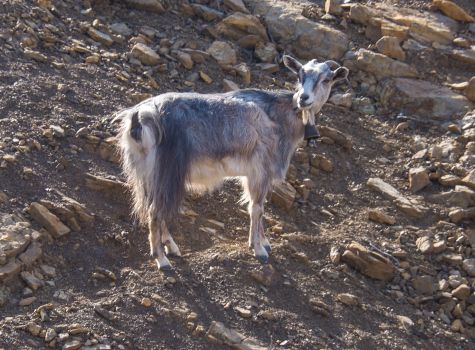

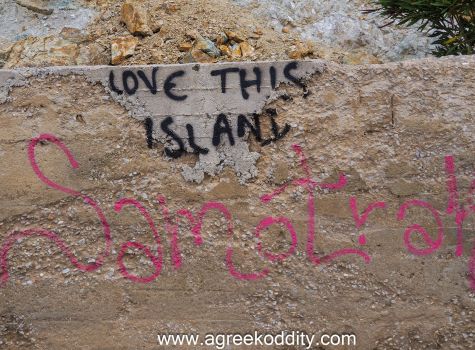

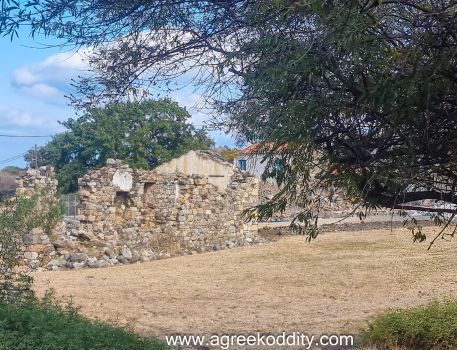
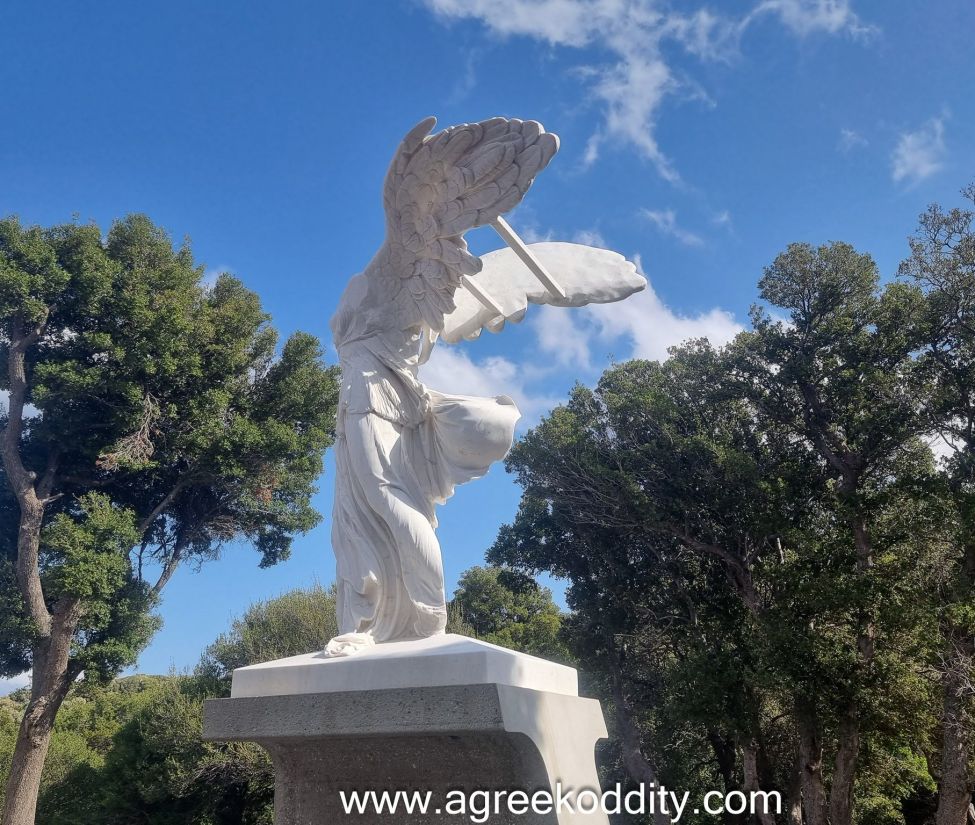

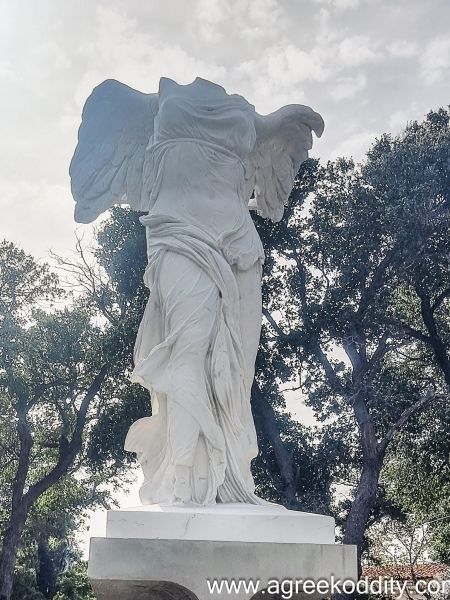


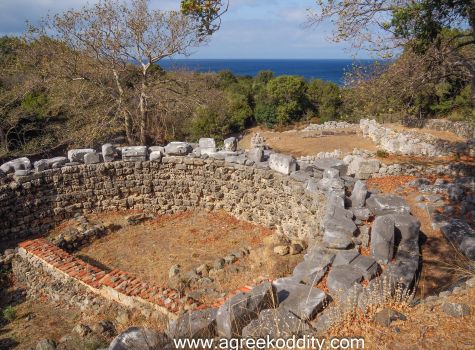
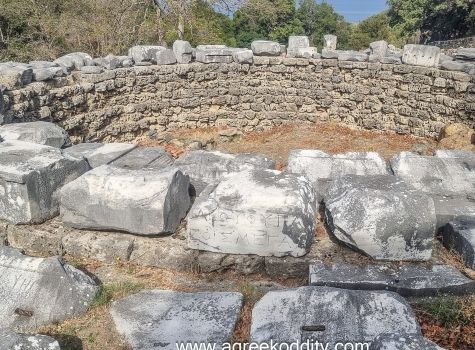

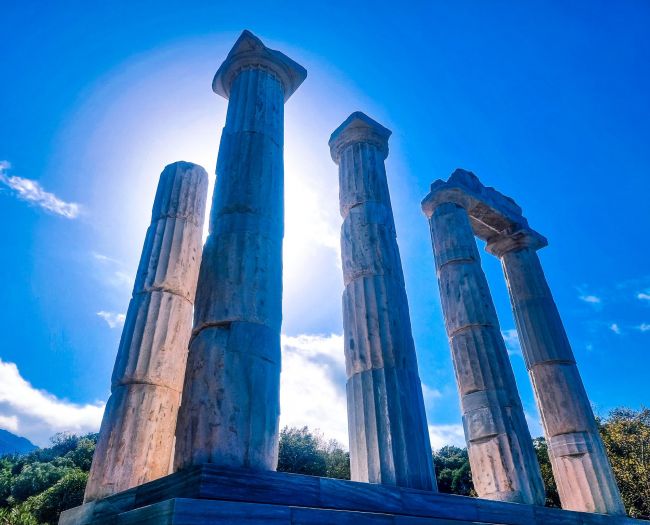






Hi Stephanie, What an interesting place is Samothrace-Chora! I thoroughly enjoy your explorations. I may return to Greece from Canada one day, and your insights provide some great ideas for a return visit!
Pat 🇨🇦
Hi Pat. It’s lovely to hear from you. Yes Samothrace really is one of the most unique Greek islands that I’ve visited. There was still so much to explore so I hope to go back one day. I hope you make it back to Greece again soon! ❤